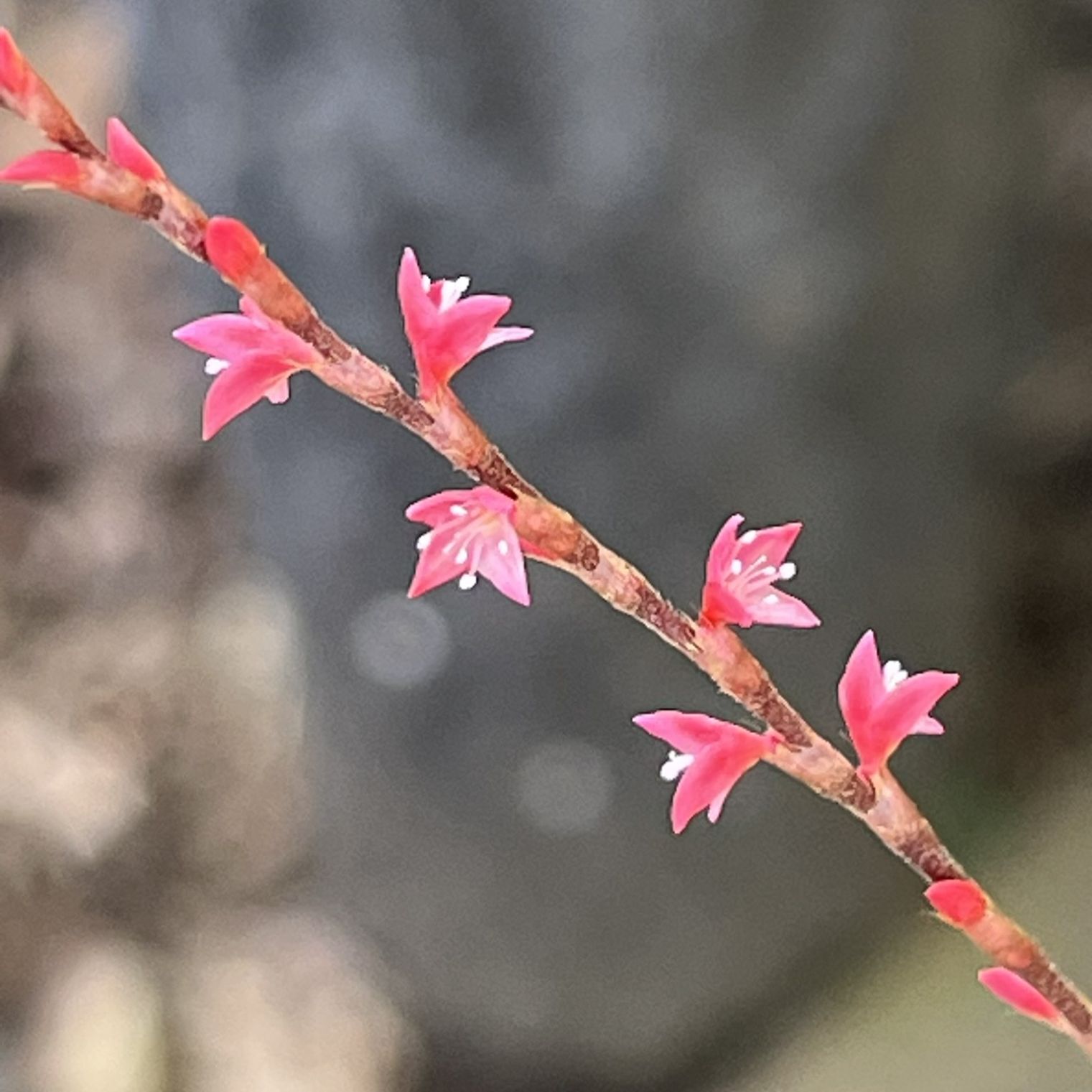ミズヒキの花は、小人の釣り竿のような花穂、花弁のような萼片が4枚、雄しべが5本、雌しべが3裂。萼片は基部が白色、先端が赤色です。
Jumpseed flowers bloom on spikes that resemble dwarf fishing rods. They have four petal-like sepals, five stamens, and a three-lobed pistil. The sepals are white at the base and red at the tip.
【仮名】ミズヒキ, ミズヒキソウ
【和名】水引, 水引草
【英名】Jumpseed, Virginia Knotweed
【学名】Persicaria filiformis
【誕生】10/ 17
【開花】08, 09, 10月
【花色】White, Red
ミズヒキ
ミズヒキの概要
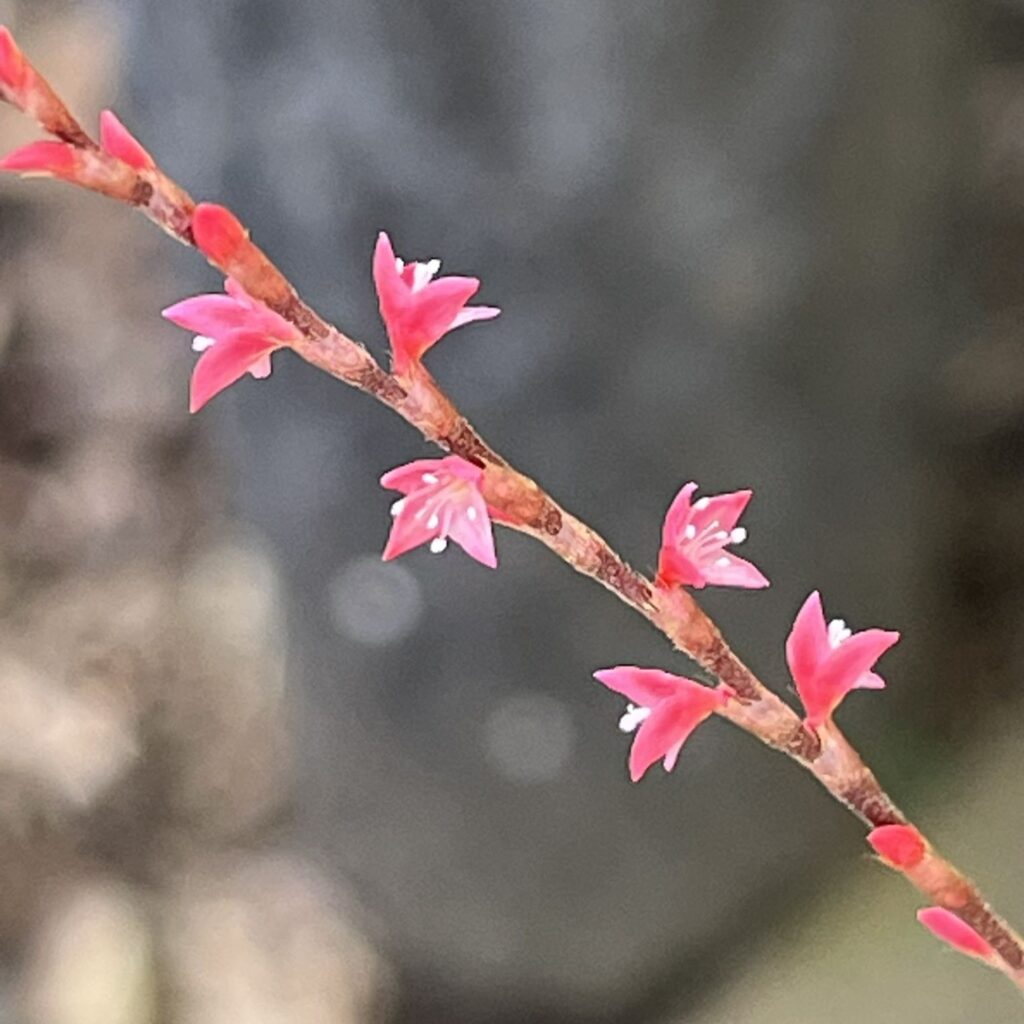
ミズヒキはタデ科イヌタデ属の多年草です。日本では北海道、本州、四国、九州、南西諸島、国外では朝鮮半島、中国、台湾に分布。花は小人の釣り竿のような花穂を順に咲き上がります。花弁のような萼片が4枚、雄しべが5本、雌しべが3裂。萼片は基部が白色、先端が赤色です。
ミズヒキの名前
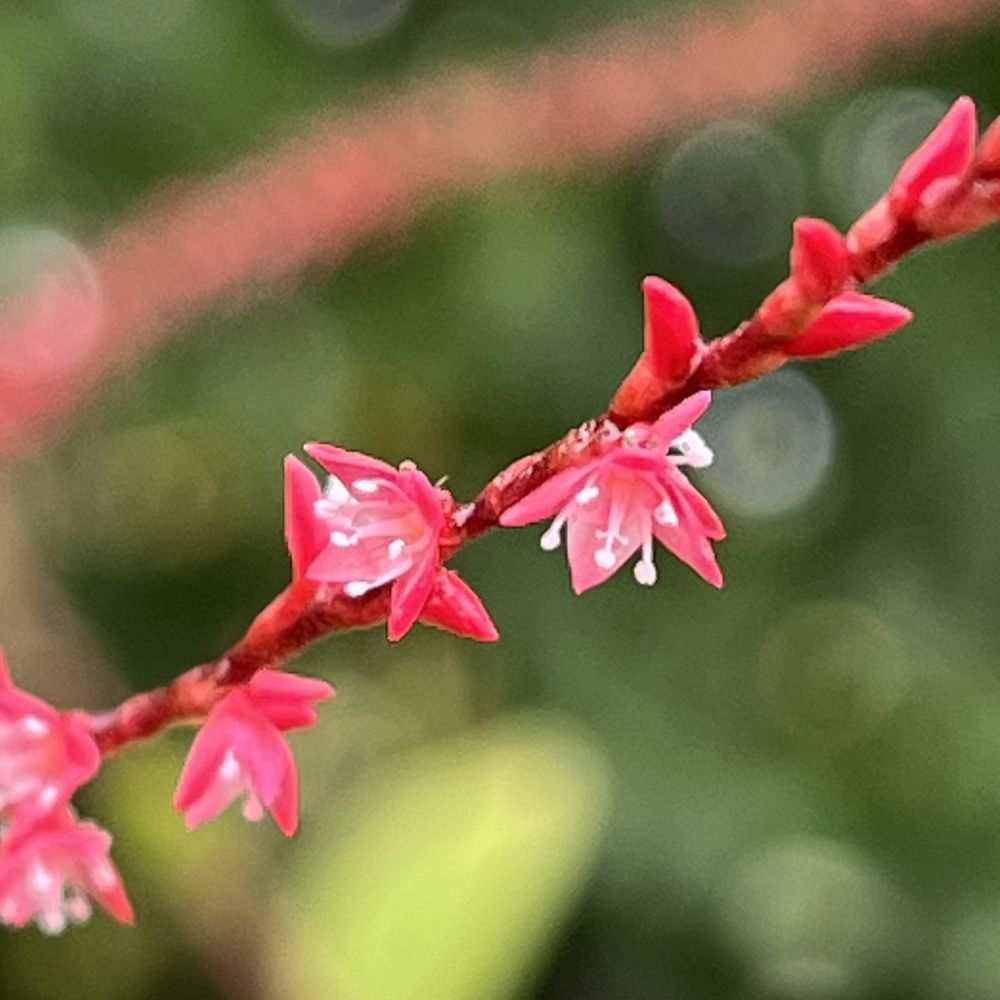
ミズヒキの和名の由来は花被の基部が白色、先端が赤色で、それが慶事に用いられる紅白2色の飾り紐「水引」を連想させるからです。ラテン語の属名ペルシカリアは「桃の」という意味で葉が似ているから。種小名フィリフォルミスは「糸状の」という意味で花穂の形に由来します。
ミズヒキの姿形
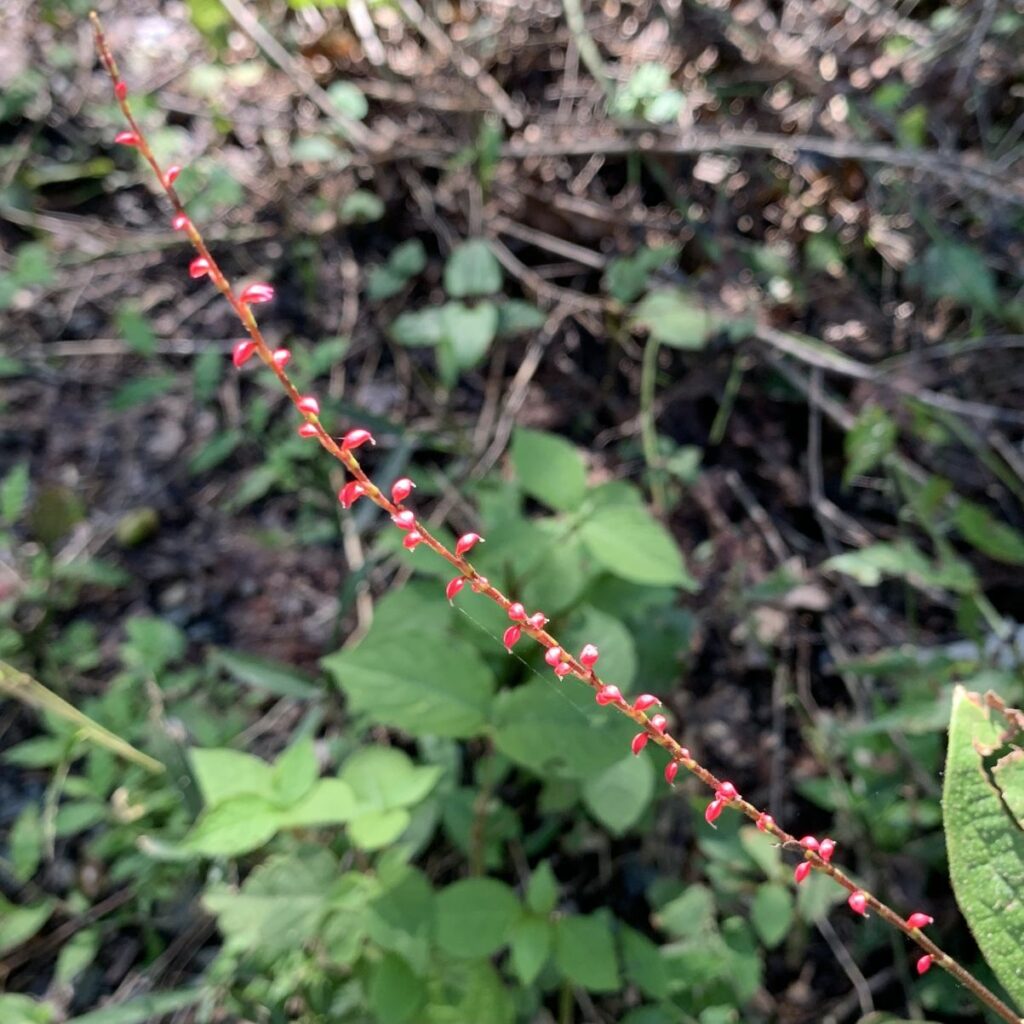
ミズヒキは地下茎が浅く伸び広がり、株を殖やします。地上茎は細く軟らかく直立。疎らに分枝し、毛が生え、節々が膨らみます。葉は先端の尖った卵形で互生。痩果は先端に鈎状の花柱が残り、動物の毛に引っかかって遠くへと運ばれます。また、弾力性のある花柄によっても飛散。
ミズヒキの逸話
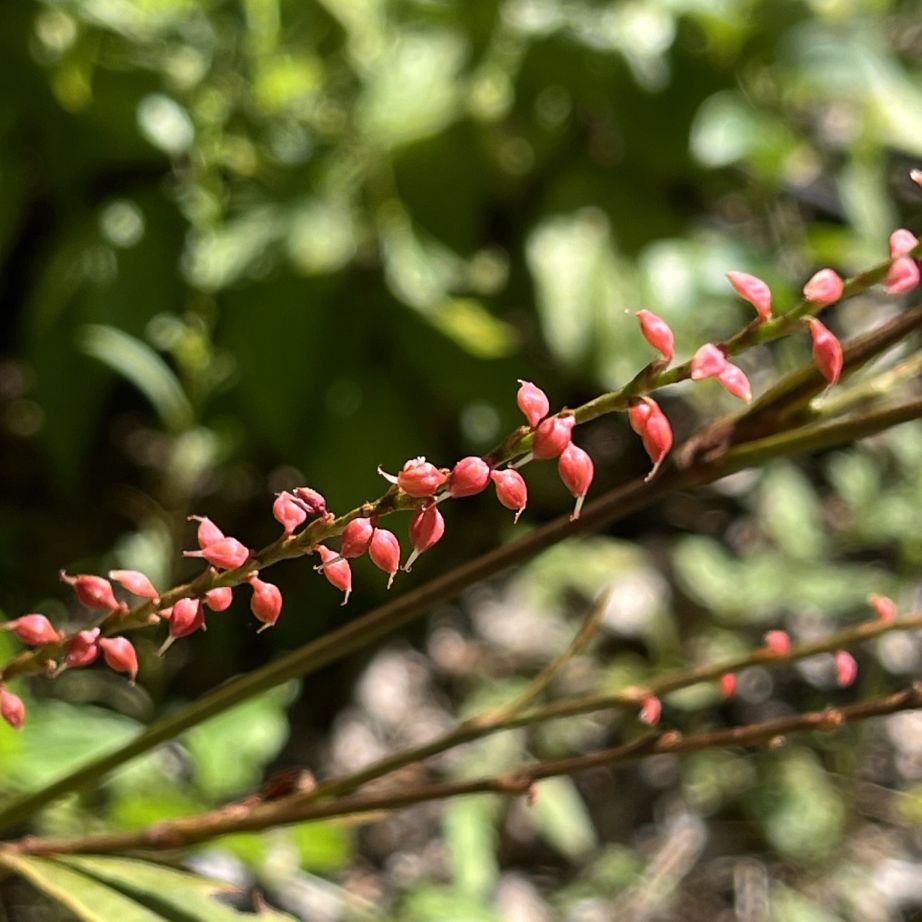
ミズヒキの和名「水引」の語源は昔、和紙で作った紙縒が戻らないよう、水糊を引いて固めたから。さらに、紙縒に色を着けるとき、水に浸して引きながら染めたからです。一方、紅白2色の紐が用いられるようになったのは飛鳥時代から。宮中で献上品に結ばれるようになりました。
Jumpseed
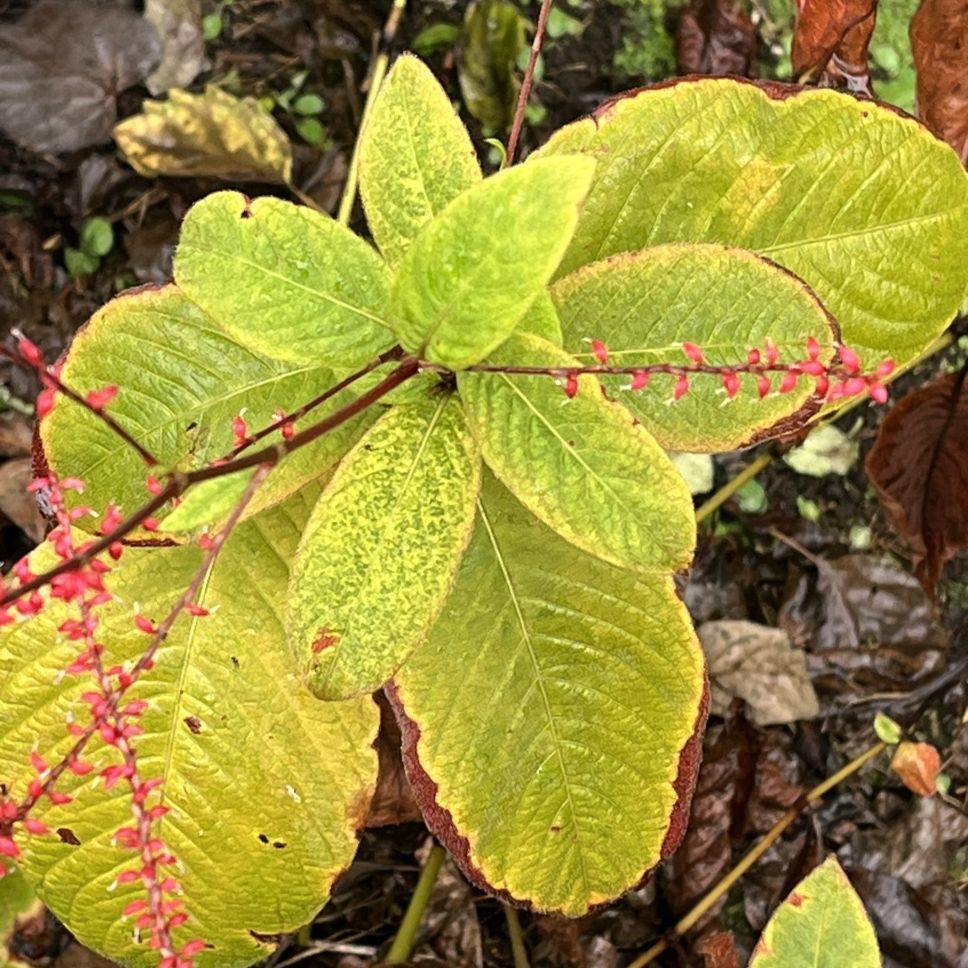
Jumpseed is a perennial plant in the Polygonaceae family. It is found in Hokkaido, Honshu, Shikoku, Kyushu, and the Ryukyu Islands in Japan, and overseas in the Korean Peninsula, China, and Taiwan. The flowers bloom on spikes that resemble dwarf fishing rods. There are four sepals that look like petals, five stamens, and a three-lobed pistil. The sepals are white at the base and red at the tip.
The Japanese name for jumpseed means “decorative red and white cord used for celebrations.” This is because the perianth’s white base and red tip are reminiscent of the cord. The plant’s genus name, Persicaria, means “peach” in Latin, and is named after the plant’s similar leaves. The specific name, filiformis, means “thread-like” and is derived from the shape of the inflorescence.
Jumpseed propagates via shallow, spreading underground stems. Aboveground stems are slender, soft, and upright. The stems are sparsely branched, hairy, and have swollen nodes. The leaves are oval and alternate with a pointed tip. The achenes retain a hook-like style at the end, allowing them to get caught on animal fur and be carried far away. They are also dispersed by the elastic flower stalks.
The Japanese name for jumpseed, “red and white decorative cords used for celebrations,” comes from the idea that in the past, paper strings made from Japanese paper were hardened with a water-based glue to prevent them from undoing their original shape. Furthermore, to color the paper strings, they were dipped in water and dyed while being drawn. However, red and white cords began to be used during the Asuka period, when they were tied to gifts at the Imperial Court.

